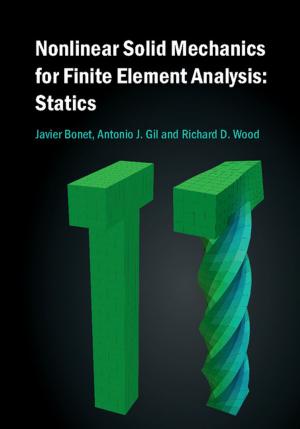| Author: | Sergey V. Gaponenko | ISBN: | 9781139636636 |
| Publisher: | Cambridge University Press | Publication: | April 8, 2010 |
| Imprint: | Cambridge University Press | Language: | English |
| Author: | Sergey V. Gaponenko |
| ISBN: | 9781139636636 |
| Publisher: | Cambridge University Press |
| Publication: | April 8, 2010 |
| Imprint: | Cambridge University Press |
| Language: | English |
Nanophotonics is where photonics merges with nanoscience and nanotechnology, and where spatial confinement considerably modifies light propagation and light-matter interaction. Describing the basic phenomena, principles, experimental advances and potential impact of nanophotonics, this graduate-level textbook is ideal for students in physics, optical and electronic engineering and materials science. The textbook highlights practical issues, material properties and device feasibility, and includes the basic optical properties of metals, semiconductors and dielectrics. Mathematics is kept to a minimum and theoretical issues are reduced to a conceptual level. Each chapter ends in problems so readers can monitor their understanding of the material presented. The introductory quantum theory of solids and size effects in semiconductors are considered to give a parallel discussion of wave optics and wave mechanics of nanostructures. The physical and historical interplay of wave optics and quantum mechanics is traced. Nanoplasmonics, an essential part of modern photonics, is also included.
Nanophotonics is where photonics merges with nanoscience and nanotechnology, and where spatial confinement considerably modifies light propagation and light-matter interaction. Describing the basic phenomena, principles, experimental advances and potential impact of nanophotonics, this graduate-level textbook is ideal for students in physics, optical and electronic engineering and materials science. The textbook highlights practical issues, material properties and device feasibility, and includes the basic optical properties of metals, semiconductors and dielectrics. Mathematics is kept to a minimum and theoretical issues are reduced to a conceptual level. Each chapter ends in problems so readers can monitor their understanding of the material presented. The introductory quantum theory of solids and size effects in semiconductors are considered to give a parallel discussion of wave optics and wave mechanics of nanostructures. The physical and historical interplay of wave optics and quantum mechanics is traced. Nanoplasmonics, an essential part of modern photonics, is also included.















